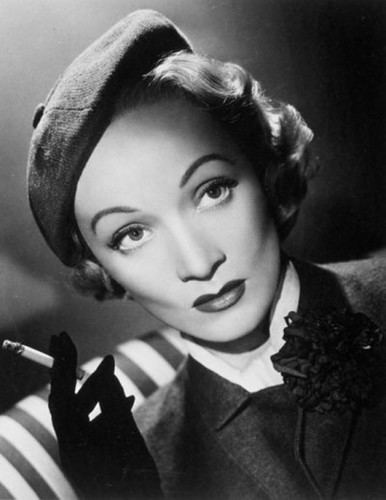Nationality French Role High-fashion designer Occupation fashion designer Died 1927 | Known for famous French milliner Resting place France Name Caroline Reboux | |
 | ||
Born 1837 Paris, France | ||
Caroline Reboux (1837–1927) was a well-known Parisian milliner and French fashion designer.
Contents

Reboux made an art form out of high fashion hats which were re-emerging in France to supplant the bonnet in the mid-19th century. She promoted the hat as an essential accessory for women's fashion.

Like many of her customers, Reboux was self-invented: she put it about that she was the fourth child of an impoverished noblewoman and a man of letters, who was orphaned and came to Paris to live.

Queen of the milliners

Reboux, the "Queen of the Milliners." made a name for herself in millinery in the later part of the 19th century and the early part of the 20th century in Europe and the United States. She employed as many as 150 workwomen at any one time. She is also closely associated with the origins of haute couture and her hat designs ranked at the same level as that custom fashion.
Reboux opened a shop at 9, Avenue Matignon, Paris, in 1865 where she worked throughout her life. Retaining this shop as her base, she opened other stores in Paris and London. Her most famous address of the late 19th century and early 20th century was located at 23 Rue de la Paix. She assisted others that she trained to open shops in New York and Chicago. She was known for over fifty years as the queen of creative fashion hats. Her designs were as much sought after as those of Charles Frederick Worth, considered the father of haute couture.
Reboux was the first person in fashion design to add a veil to a woman’s hat. She also started the vogue of colored veils. Reboux made many fashionable hats for the theater.
Reboux is often mistakenly credited as the "inventor" of the cloche hat, although millinery historians would agree that French milliner Lucy Hamar must share in that credit, as both she and Reboux introduced this style sometime around the year 1914. Reboux is also given credit for designing the iconic, unstructured, felt cloche "helmet" hat which first appeared in the 1920s. Reboux would create the hat by placing a length of felt on a customer's head and then cutting and folding it to shape. She was always one of the leading exponents of the form.
Reboux also did innovative unique models up-dating past modes such as the large-brimmed straws known as Gainsborough hats, and the turban-like toques in the manner of Mme Vigée-Lebrun's sitters.
Reboux worked with most of the major fashion designers of Europe and provided women hats for their design collections. A notable business practice of Reboux was to divide half the profits of her business among the head cashier, the forewoman, the directress of the workroom, and the head manager. Reboux was appointed to represent Parisian commerce at the Paris World’s Fair of 1900. During Reboux's life she maintained a great friendship with the fashion designer Madeleine Vionnet. The Caroline Reboux business finally closed its doors in 1956. More than 300 creations by Reboux are preserved at the Musée de la Mode et du Textile in Paris.
Famous clients
Marlene Dietrich was a faithful customer of Reboux, from whom she bought her trademark berets. The exhibition of Marlene Dietrich "Birth of a Myth" was held at the fashion museum Musée Galliera (Paris) in 2003 exhibing fashions of Reboux. There are today headdresses signed "Caroline Reboux" in the vitrines devoted to Marlene Dietrich at the Deutsche Kinemathek film museum of Berlin. Many famous designers of fashion of the 20th century were trained by Reboux.
Reboux creations from the 1860s attracted the attention of Princess Pauline von Metternich and the Empress Eugénie. Elsa Triolet was also a regular store customer on Avenue Matignon, sometimes accompanied by Louis Aragon.
The famous American milliner Lilly Daché trained under Reboux for five years, and Rose Valois, an equally successful milliners' in its own right, was set up in 1927 by Reboux's former employee, Madame Fernand Cleuet, along with Vera Leigh, and a third employee.
After death
Wallis Warfield Simpson, Duchess of Windsor, wore a blue Mainbocher outfit and a halo hat by Reboux for her wedding to the former King of England, Edward VIII at the Château Candé, Monts, June 3, 1937.
Reboux's business continued leadership under Mme. Lucienne after her death in 1927. The shop was well known for making the head-fitting felt cloche the status symbol of fashion for many years. The shop was famous for making hats that were noted for profile brims, dipping low on one side, forward-tilt tricorns, open-crown lamé turbans, and flower bandeaus.
Reboux in fiction
The name 'Reboux' is mentioned in Thérèse Desqueyroux, a novel written by François Mauriac and published in 1927: « Anna de la Trave was wearing an overcoat of light grey cloth and a felt hat without ribbon or trimming of any sort ('though,' said Madame de la Trave, 'it costs more like that than the hats we used to have with all those feathers and aigrettes. But, of course, it's the very finest quality felt from Lailhala's — a Reboux model.') »
